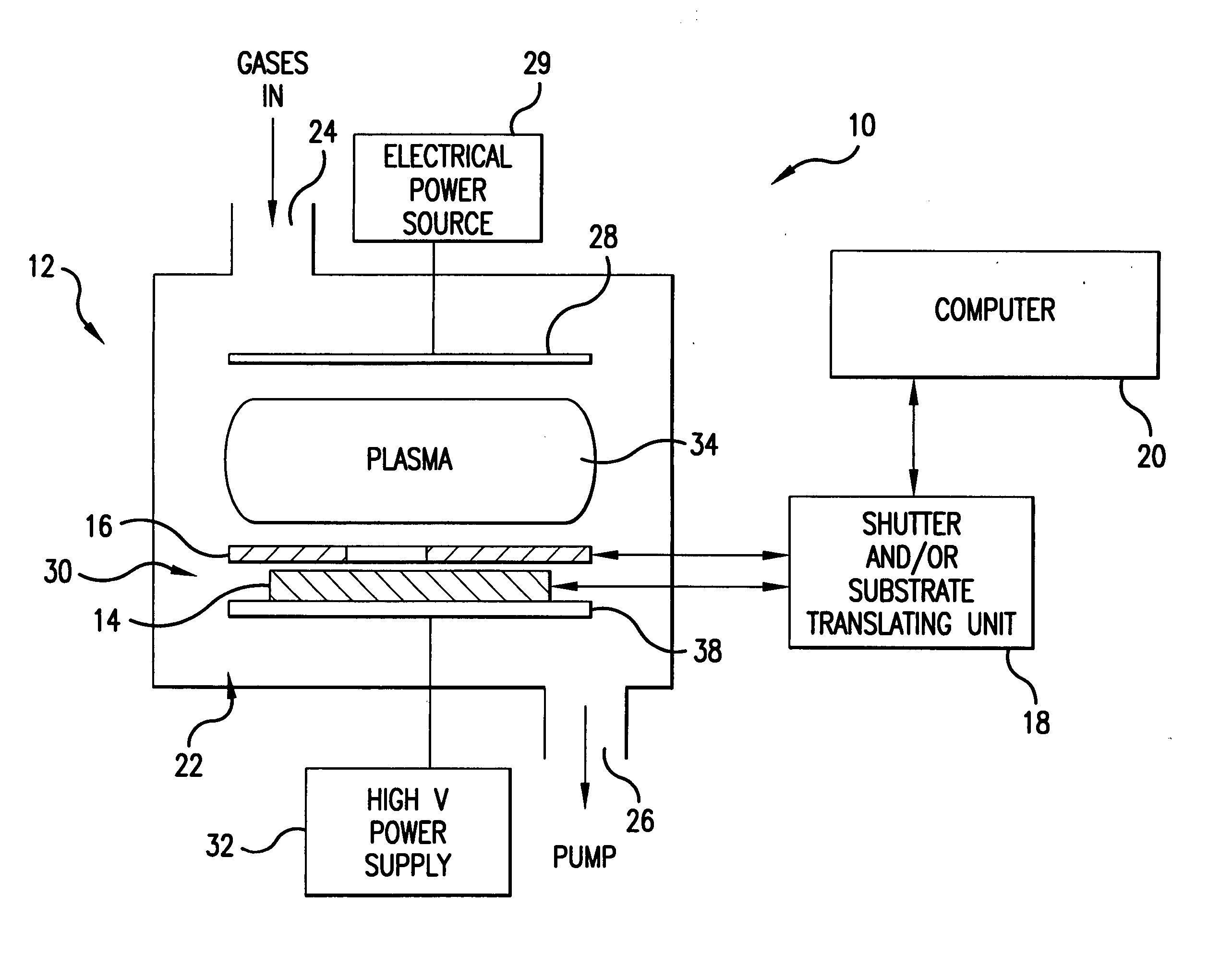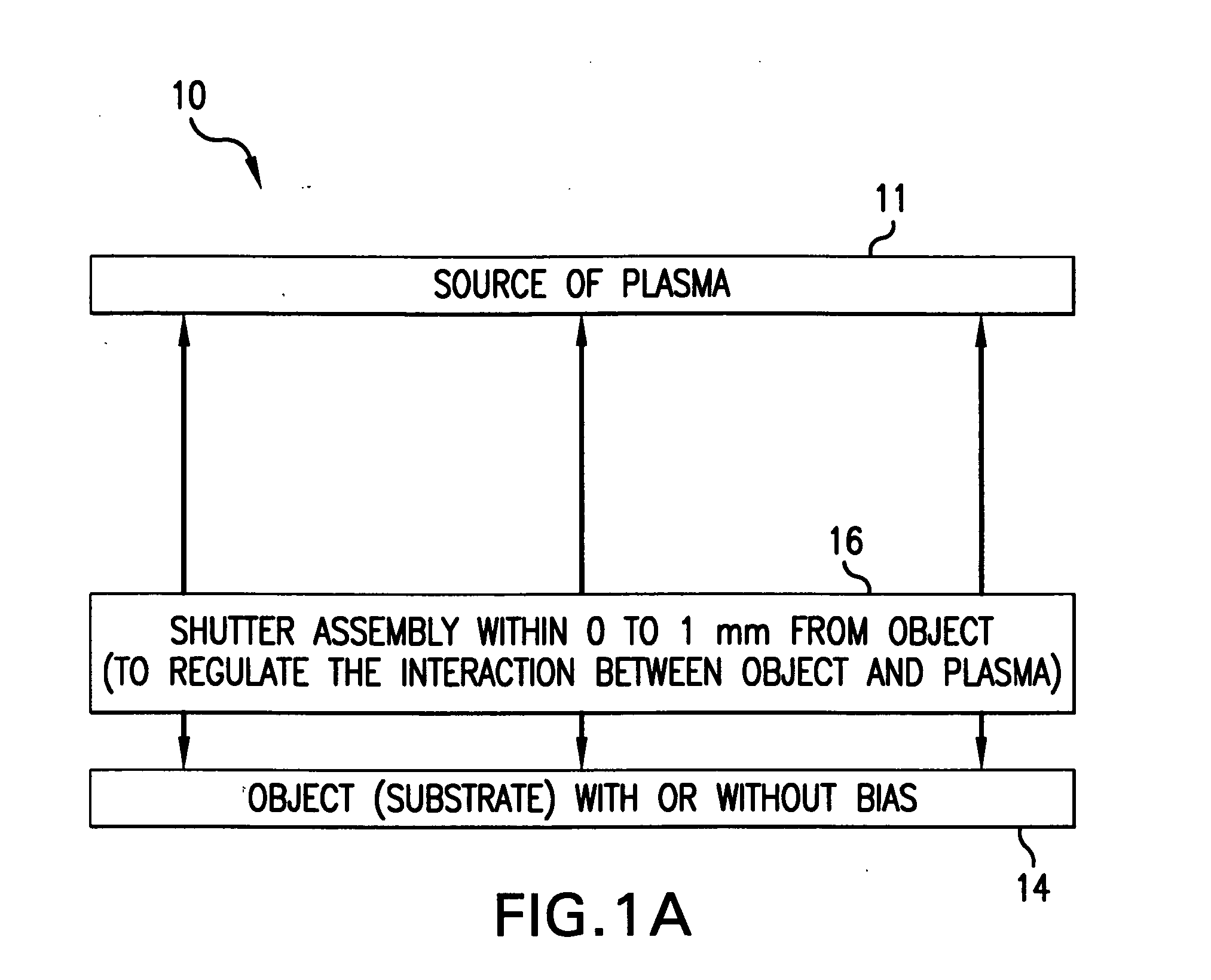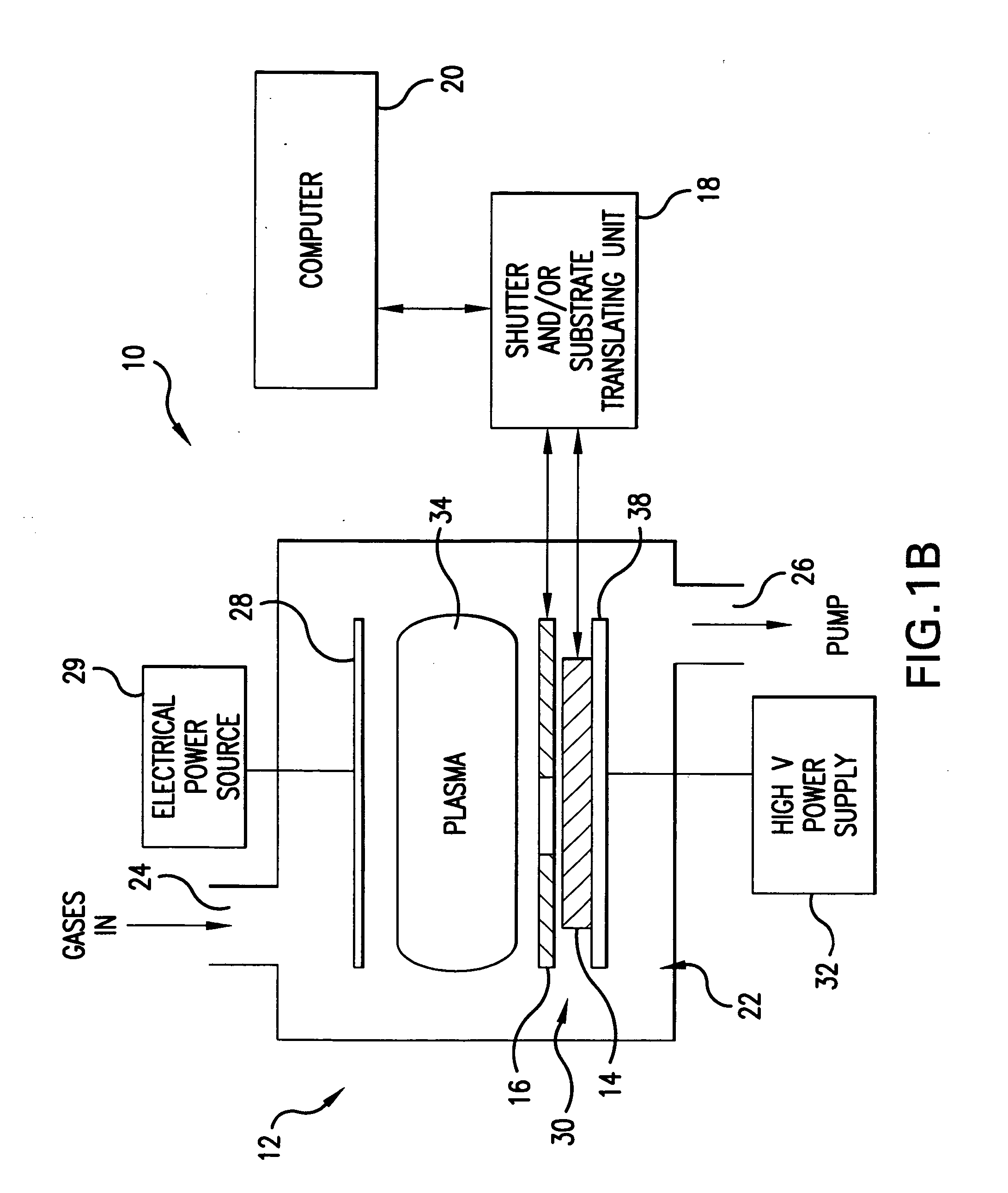Method and system for nanoscale plasma processing of objects
a plasma processing and nano-scale technology, applied in the field of plasma processing of objects, can solve the problems of short plasma/substrat interaction time, inacceptable plasma processing of layers with nano-scale dimensions, and several current technologies, etc., and achieve the effect of allowing control of interaction tim
- Summary
- Abstract
- Description
- Claims
- Application Information
AI Technical Summary
Benefits of technology
Problems solved by technology
Method used
Image
Examples
Embodiment Construction
Referring to FIGS. 1A and 1B, there is shown a system 10 for nanoscale plasma processing of a workpiece including a source of plasma 11 (also referred to herein as plasma generating unit), a plasma reactor 12, the details of which will be presented infra herein; a workpiece 14, also referred herein as a substrate or an object; a shutter assembly 16 in close proximity or in contiguous relationship with the substrate 14; a shutter and / or substrate translating unit 18; and a computer 20 controlling the operation of the system 10. The plasma reactor 12 includes a plasma processing chamber 22 filled with gas molecules (for example, Ar) passing through a gas inlet 24. As an example, the reactive gas pressure within the plasma processing chamber 22 may be maintained at between approximately 1 mTorr and 10 Torr. Also, atmospheric pressure discharges are contemplated in the system of the present invention for many low-tech materials. The pressure parameters discussed supra are an example of...
PUM
| Property | Measurement | Unit |
|---|---|---|
| Width | aaaaa | aaaaa |
| Width | aaaaa | aaaaa |
| Width | aaaaa | aaaaa |
Abstract
Description
Claims
Application Information
 Login to View More
Login to View More - R&D
- Intellectual Property
- Life Sciences
- Materials
- Tech Scout
- Unparalleled Data Quality
- Higher Quality Content
- 60% Fewer Hallucinations
Browse by: Latest US Patents, China's latest patents, Technical Efficacy Thesaurus, Application Domain, Technology Topic, Popular Technical Reports.
© 2025 PatSnap. All rights reserved.Legal|Privacy policy|Modern Slavery Act Transparency Statement|Sitemap|About US| Contact US: help@patsnap.com



